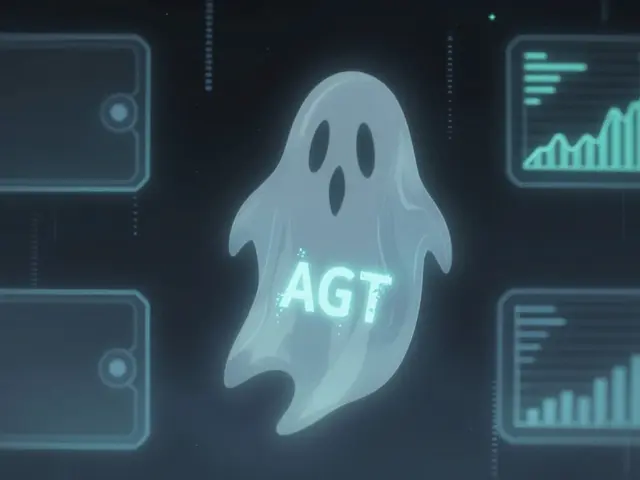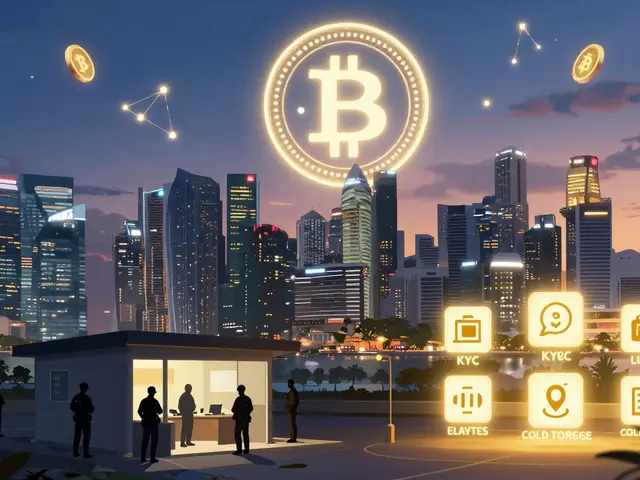Iranian Crypto Transfer Calculator
Iran's sanctions have created a unique financial landscape where crypto enables essential transactions. This calculator shows the real value of crypto transfers after fees and exchange rates.
Transfer Value Analysis
In Iran, traditional remittance services typically take 3-5 days with 5-15% fees. This calculation shows the actual value you'd receive through crypto transfers.
Why This Matters
The calculator reflects Iran's unique situation where:
- Official exchange rates differ significantly from market rates
- Transfer fees vary based on network choice (e.g., USDT vs DAI)
- Sanctions lead to layering patterns that increase effective costs
- Bitcoin serves as critical insurance during economic crises
How Iranians Are Using Crypto to Survive Sanctions
When banks won’t let you send money abroad, when your salary loses half its value in a month, and when foreign payments for essential goods are blocked - you find another way. For millions of Iranians, that way is cryptocurrency. It’s not a hobby. It’s not an investment gamble. It’s survival.
In 2025, Iran saw $3.7 billion in crypto flows between January and July - down 11% from 2024, but still massive. That drop isn’t because people stopped using crypto. It’s because the U.S. and its allies got smarter at shutting it down. Every time a wallet gets frozen, Iranians switch networks. Every time a stablecoin gets blocked, they move to another. They’re not chasing gains. They’re chasing freedom.
The Government’s Double Game
The Iranian government doesn’t hate crypto. It uses it. In 2019, it legalized mining - but only if you sell your coins to the Central Bank of Iran at a fixed price. Miners pay sky-high electricity rates, making most operations unprofitable. So they go underground. Meanwhile, the government runs its own mining farms, feeding Bitcoin and Ethereum into state coffers.
Domestic exchanges like Nobitex are legal, monitored, and required to hand over user data through government APIs. You can buy crypto there - but only if the state knows exactly who you are and what you’re doing. It’s a controlled outlet: enough to keep people from revolting, but not enough to let them escape entirely.
On December 27, 2024, Iran shut down all crypto-to-rial conversions online. A month later, it reopened them - but only for exchanges connected to state-approved systems. This wasn’t a policy shift. It was a surveillance upgrade.
How Iranians Circumvent the Blockade
Most Iranians don’t trust Nobitex to hold their life savings. They use VPNs - thousands of them - to access Binance, Kraken, and other foreign platforms. They don’t care about the legal risks. They care about access.
They convert Iranian rials into USDT or TRX on local exchanges. Then, they move the funds through a chain of 5-10 intermediary wallets. Each hop breaks the trail. Then, they off-ramp through exchanges in Turkey, the UAE, or Hong Kong - places with weak KYC rules. Chainalysis calls this the “Iranian layering pattern.” It’s the same method used by drug cartels and sanctioned regimes. Only here, it’s ordinary people trying to buy medicine, send money to family, or save their pensions.
After Tether froze $200 million in Iranian-linked USDT addresses in July 2025, users didn’t panic. They switched to DAI on the Polygon network. Why? Faster transactions. Lower fees. Less exposure to centralized freezes. Within days, DAI usage in Iran jumped 300%. This isn’t luck. It’s education. Iranians now understand blockchain architecture better than most Western investors.

Why Bitcoin Is Iran’s Secret Weapon
Bitcoin doesn’t need a bank. It doesn’t need a government. It doesn’t need an internet connection if you have a satellite phone and a seed phrase. That’s why, amid blackouts and internet shutdowns, Iranians still hold Bitcoin in cold wallets - paper, metal, even engraved on steel plates.
Unlike bank accounts, Bitcoin can’t be seized by court order. Unlike gold, it can be sent instantly across borders. Unlike real estate, you can carry it in your pocket. When the economy collapses, when protests break out, when you need to flee - Bitcoin is the only asset that doesn’t require permission to move.
TRM Labs found that Iranian users hold more Bitcoin per capita than any other sanctioned nation. It’s not speculation. It’s insurance. One Tehran-based engineer told a journalist: “I don’t care if Bitcoin goes to $100,000. I care that I can leave tomorrow and still have money.”
The New Tax Trap
In August 2025, Iran passed the Law on Taxation of Speculation and Profiteering. For the first time, crypto profits are taxed - at the same rate as gold and forex trading. The government isn’t trying to kill crypto. It’s trying to control it.
This law is a signal: crypto is now part of the official economy. But it’s also a trap. If you report your gains, you give the state a list of your wallets. If you don’t report, you risk fines or worse. Many Iranians are choosing silence. They trade peer-to-peer. They use cash-based OTC desks. They avoid leaving digital trails.
Experts say this tax law is less about revenue and more about intelligence. Every transaction you declare is a data point. Every wallet you link to your ID is a vulnerability. The state isn’t taxing crypto to fund the budget. It’s using it to map dissent.

Who’s Really Behind the Scenes?
The Islamic Revolutionary Guard Corps (IRGC) doesn’t just tolerate crypto - it runs it. Treasury Department reports show that over 40% of Iranian crypto flows connect to IRGC-linked addresses. These aren’t random wallets. They’re part of a global network that buys drones from China, pays mercenaries in Syria, and imports missile parts through Dubai.
But here’s the twist: the same wallets that fund the IRGC also fund ordinary families. A miner in Mashhad sells his Bitcoin to a local trader. That trader sends the money to a hospital supplier in Tehran. The supplier pays for oxygen tanks. The oxygen tanks save lives. The system is broken, but it works.
OFAC designated 13 crypto addresses in 2024 - the second-highest number in seven years. Each designation triggers a chain reaction. Exchanges scramble. Users migrate. Networks shift. And the cycle repeats.
The Future: A Cat-and-Mouse Game
Sanctions enforcement is no longer about blocking banks. It’s about freezing wallets. Tracking IP addresses. Mapping transaction graphs. In 2025, the U.S. froze addresses linked to oil tankers, front companies, and crypto exchanges - all in one sweep.
Iran’s response? Speed. Agility. Decentralization. When one network gets hit, they move to another. When one stablecoin is flagged, they switch to a different one. They use cross-chain bridges, private swaps, and decentralized protocols that don’t require sign-ups.
Iranian crypto users aren’t hackers. They’re not criminals. They’re parents, doctors, teachers, and students. They’re using the most advanced financial tool on Earth - not to get rich, but to stay alive.
The world thinks sanctions will break Iran. But for millions, crypto is the reason they haven’t broken yet.
What Happens If Sanctions Get Tighter?
If the U.S. cuts off Iran’s access to all foreign exchanges, Iranians will turn to peer-to-peer networks. They’ll use Telegram bots to match buyers and sellers. They’ll trade Bitcoin for cash in parking lots. They’ll use QR codes to transfer value offline.
If the government shuts down all VPNs, people will use mesh networks and satellite internet. If mining becomes impossible, they’ll trade their electricity vouchers for crypto on black markets.
There’s no endgame for sanctions if the population has access to a borderless, censorship-resistant asset. Crypto doesn’t need a country. It doesn’t need a government. It just needs a phone and a will to survive.












Nabil ben Salah Nasri
November 4, 2025 AT 01:41 AMThis is honestly one of the most moving things I've read all year. 😭 People aren't trading crypto for fun-they're trading it to feed their kids, pay for insulin, and keep their families alive. The fact that they're outsmarting sanctions with blockchain tech? That's not hacking. That's human ingenuity at its purest. 🙏
alvin Bachtiar
November 5, 2025 AT 18:04 PMLet’s be real-this isn’t ‘survival.’ It’s a sanctioned state weaponizing its populace to launder money for the IRGC. The same wallets funding oxygen tanks? Also funding drones that kill civilians. This isn’t Robin Hood-it’s a kleptocracy with a blockchain veneer. And yes, I’ve analyzed the on-chain data. The patterns are unmistakable.
Josh Serum
November 6, 2025 AT 06:58 AMOkay but have you considered that maybe the U.S. sanctions are the real problem here? Like, sure, the Iranian government is shady-but if you cut off a country’s access to the global financial system, what do you expect? People are going to use Bitcoin. It’s not a conspiracy. It’s basic economics. And honestly? I respect them for it. We should be building bridges, not walls. 🤷♂️
DeeDee Kallam
November 6, 2025 AT 15:30 PMi cant even believe this is real... like... people are literally using crypto to buy medicine?? my dog has better healthcare than these folks 😭
Helen Hardman
November 7, 2025 AT 05:50 AMI just want to say how incredibly brave these people are. Imagine being a teacher in Shiraz, watching your salary evaporate every month, and instead of giving up-you learn how to use a cold wallet, set up a VPN, navigate cross-chain bridges, and send your life savings through ten different wallets just so your daughter can get her asthma inhaler. This isn’t finance. This is heroism. And honestly? We in the West have no idea what real resilience looks like until we see this. I’m in awe. 💪❤️
Bhavna Suri
November 7, 2025 AT 18:17 PMThis is too complicated. Why not just use gold?
Elizabeth Melendez
November 9, 2025 AT 16:44 PMi didnt even know about the dais on polygon thing!! thats wild!! i just learned that iranians switched because tether froze their usdt and now theyre all on dais bc its decentralized and faster?? omg i need to read more about this. also the part about steel plates with seed phrases?? like... thats next level. i thought only crypto bros did that. these are normal people doing this for survival. my heart. 🥺
Ron Cassel
November 11, 2025 AT 05:11 AMLet me guess-the U.S. is the villain here, right? Meanwhile, Iran’s regime is using crypto to fund terrorism, and you’re calling it ‘resistance’? Wake up. This isn’t freedom. It’s financial terrorism with a side of blockchain. The fact that people are ‘educating themselves’ doesn’t excuse the IRGC using their wallets to buy missile parts. This isn’t a documentary. It’s a national security nightmare.
Jeremy Jaramillo
November 11, 2025 AT 07:00 AMI’ve been reading about this for months now. What’s missing from most discussions is the humanity. These aren’t ‘users’ or ‘addresses.’ They’re mothers who trade electricity vouchers for DAI so their kids can get vaccines. They’re engineers who keep Bitcoin on metal plates because they know the government could raid their home tomorrow. We need to stop seeing this as a crypto story. It’s a human rights story. And we’re all part of it-whether we like it or not.
Sammy Krigs
November 11, 2025 AT 12:00 PMwait so if they use vpn to get to binance but then the goverment knows who they are cause of nobitex... then why even bother? like dont they just get caught?? i think im missing somthing
Derek Hardman
November 11, 2025 AT 23:15 PMThe sophistication of this underground financial network is nothing short of remarkable. It represents a profound decentralization of economic agency in the face of systemic oppression. One cannot help but admire the resilience and technical literacy demonstrated by Iranian citizens. This is not merely circumvention-it is the reclamation of financial sovereignty.
Eliane Karp Toledo
November 13, 2025 AT 18:16 PMEveryone’s ignoring the elephant in the room: this whole thing is a psyop. The U.S. is letting them use crypto so they can track everyone. The ‘freezing’ of wallets? Staged. The ‘switching’ to DAI? A trap. They want us to think this is resistance-but it’s surveillance. They’re harvesting every seed phrase, every IP, every transaction. This isn’t freedom. It’s a honeypot. And we’re all being played.
Phyllis Nordquist
November 14, 2025 AT 00:08 AMWhile the humanitarian imperative of crypto adoption in Iran is undeniable, it is equally imperative to acknowledge the structural risks inherent in the system’s dual-use nature. The same cryptographic tools that empower civilians also enable illicit financial flows. A nuanced policy response-targeted sanctions on IRGC-linked entities, combined with humanitarian exemptions and decentralized financial literacy programs-may offer a more sustainable path forward than blanket prohibitions or moral absolutism.